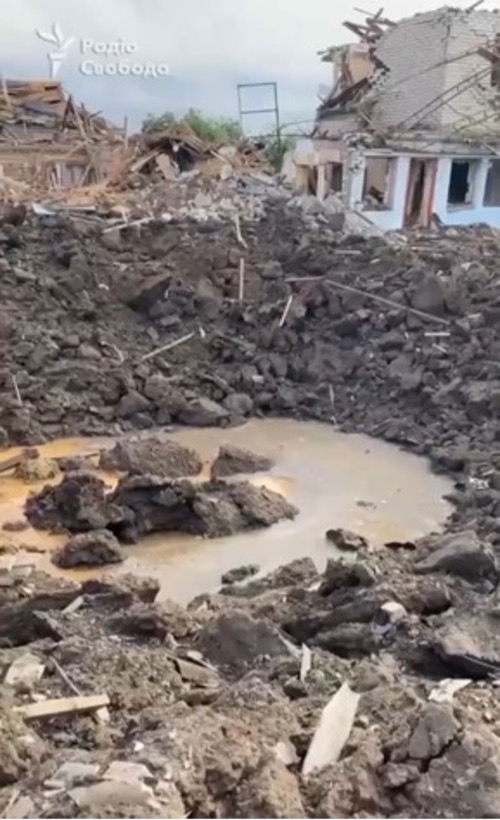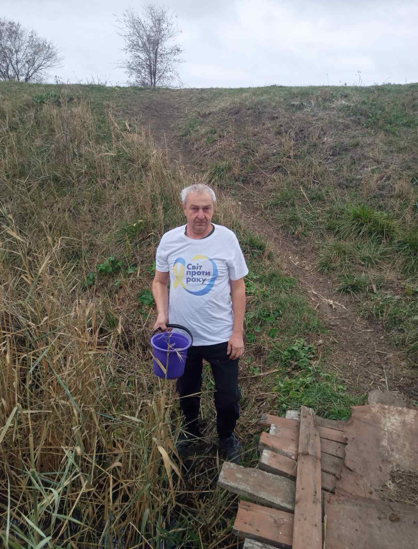Chemical composition of groundwater in Eastern Ukraine during the war: an environmental risk assessment by the World Against Cancer foundation
Russia’s war against Ukraine has devastating humanitarian, social, economic, and environmental consequences. Monitoring environmental pollutants in eastern Ukraine is essential.
The fighting contributes to mechanical and chemical pollution of water bodies and groundwater. As a result of the detonation of landmines and ammunition remnants, heavy metals (copper, iron, lead, zinc, arsenic) remain on the surface of the earth for many decades and can enter groundwater for a long time.
The fighting contributes to mechanical and chemical pollution of water bodies and groundwater. As a result of the detonation of landmines and ammunition remnants, heavy metals (copper, iron, lead, zinc, arsenic) remain on the surface of the earth for many decades and can enter groundwater for a long time.

Specialists and volunteers of the World Against Cancer Charitable Foundation are studying the content of environmental toxins, organic compounds, and heavy metals in groundwater in southeastern Ukraine near the front line in order to identify areas of high risk of contamination.

Significant contamination of aquifers near the front line was detected. It may be associated with both natural and man-made factors caused by hostilities.
An increase of more than 6 times in the total salt content indicates high water mineralization. This may be the result of leakage of industrial or agricultural chemical waste, groundwater contamination from destroyed infrastructure, or the rise of salts from deep horizons due to soil destruction.
The cause of the high nitrate content (3 times higher than the norm) may be agricultural fertilizers, decomposition of organic matter, or wastewater.
Chlorides can be an indicator of local contamination due to spills or leaks from munitions.
High sodium levels may indicate leaching of salts from destroyed industrial facilities or soil.
High sulfate levels (7 times the limit) are often associated with industrial emissions or decomposition of organic matter.
High calcium and magnesium levels (6 and 3 times the limit) may be caused by damaged building materials and natural barriers, or by the destruction of surface soil horizons.
Elevated aluminum levels may be the result of leaching of metals from the soil, especially if processes associated with the destruction of its layers are taking place. Aluminum may also be associated with industrial sources.
Water contamination with organic compounds and heavy metals has been recorded at depths of 5 and 14 meters. This water does not meet current standards even in wartime.
At a depth of 190 meters (artesian level), the presence of chemical pollutants has not been recorded.
Our main goal today is to ensure constant monitoring of air, soil and water quality, to prevent the continuation of ecocide if possible, and to develop a state plan for the recovery of Ukraine through joint efforts with the international community.
An increase of more than 6 times in the total salt content indicates high water mineralization. This may be the result of leakage of industrial or agricultural chemical waste, groundwater contamination from destroyed infrastructure, or the rise of salts from deep horizons due to soil destruction.
The cause of the high nitrate content (3 times higher than the norm) may be agricultural fertilizers, decomposition of organic matter, or wastewater.
Chlorides can be an indicator of local contamination due to spills or leaks from munitions.
High sodium levels may indicate leaching of salts from destroyed industrial facilities or soil.
High sulfate levels (7 times the limit) are often associated with industrial emissions or decomposition of organic matter.
High calcium and magnesium levels (6 and 3 times the limit) may be caused by damaged building materials and natural barriers, or by the destruction of surface soil horizons.
Elevated aluminum levels may be the result of leaching of metals from the soil, especially if processes associated with the destruction of its layers are taking place. Aluminum may also be associated with industrial sources.
Water contamination with organic compounds and heavy metals has been recorded at depths of 5 and 14 meters. This water does not meet current standards even in wartime.
At a depth of 190 meters (artesian level), the presence of chemical pollutants has not been recorded.
Our main goal today is to ensure constant monitoring of air, soil and water quality, to prevent the continuation of ecocide if possible, and to develop a state plan for the recovery of Ukraine through joint efforts with the international community.